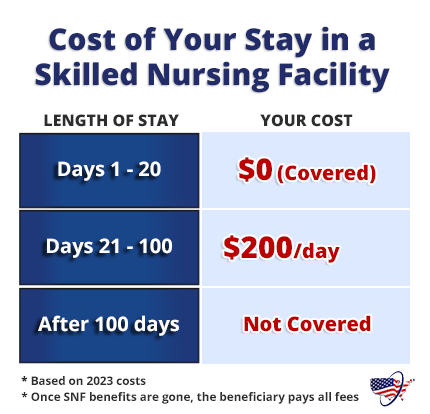Many neighborhood health nurses also offer counseling for their clients to assist them improve their general health. This includes disease avoidance, nutrition and exercise, and childcare. Increasing a client's knowledge about health care will assist him or her make much better choices for his or her health. The more people that make those choices and get the care they require, the better the general health of the neighborhood will be.
Rehab is defined as" Simply put, rehabilitation assists a kid, adult or older person to be as independent as possible in daily activities and enables participation in education, work, recreation and meaningful life functions such as taking care of household. It does so by attending to hidden conditions (such as discomfort) and enhancing the way a specific functions in daily life, supporting them to conquer difficulties with thinking, seeing, hearing, interacting, consuming or walking around. Anyone may need rehabilitation at some time in their lives, following an injury, surgery, disease or illness, or because their performance has decreased with age.

Customizing an older individual's house environment to improve their safety and self-reliance at home and to reduce their danger of falls. Exercise training and education on healthy living for an individual with a heart disease. Making, fitting and informing an individual to use a prosthesis after a leg amputation. Positioning and splinting methods to assist with skin recovery, lower swelling, and to gain back motion after burn surgery. Recommending medication to reduce muscle stiffness for a child with spastic paralysis. Mental assistance for an individual with depression. Training in the usage of a white cane, for an individual with vision loss.
Rehabilitation can be supplied in several settings, from inpatient or outpatient health center settings, to private centers, or community settings such as a person's house. The rehabilitation workforce is comprised of different health experts, consisting of physio therapists, occupational therapists, speech and language therapists, orthotists and prosthetists, and physical medicine and rehabilitation physicians. Rehabilitation can reduce the impact of a broad series of health conditions, including diseases (intense or chronic), illnesses or injuries. It can also complement other health interventions, such as medical and surgical interventions, helping to accomplish the finest result possible. For instance, rehabilitation can help to minimize, manage or prevent issues related to many health conditions, such as spine cord injury, stroke, or a fracture - Where does rehab fall allied health.

Rehabilitation is a financial investment, with cost advantages for both the individuals and society. It can help to avoid pricey hospitalization, reduce healthcare facility length of stay, and prevent re-admissions. Rehabilitation likewise allows individuals to get involved in education and rewarding work, remain independent at home, and minimize the need for monetary or caregiver support. Rehabilitation is a fundamental part of universal health protection and is an essential technique for accomplishing Sustainable Advancement Goal 3 "Make sure healthy lives and promote well-being for all at all ages". Rehabilitation is not just for individuals with long-term or physical problems. Rather, rehab is a core health service for anybody with a severe or chronic health condition, disability or injury that restricts functioning, and as such must be offered for anybody who needs it.
Nor is it an optional service to attempt just when other interventions to avoid or cure a health condition fail. For the complete degree of the social, economic and health benefits of rehabilitation to be understood, prompt, high quality and budget-friendly rehabilitation interventions must be readily available to all. In lots of cases, this suggests beginning rehabilitation as quickly as a health condition is kept in mind and continuing to provide rehabilitation along with other health interventions. Worldwide, about 2. 4 billion people are presently living with a health condition that benefits from rehab. With changes happening in the health and attributes of the population worldwide, this approximated requirement for rehabilitation is only going to increase in the coming years.
The 20-Second Trick For How To Document Shadowing Experience For Mental Health Rehab
At the exact same time, the ongoing occurrence of injury (such as a burn) and child developmental conditions (such as cerebral palsy) continue. These health conditions can impact an individual's working and are linked to increased levels of disability, for which rehabilitation can be beneficial. In many parts of the world, this increasing requirement for rehabilitation is going mainly unmet. More than half of people residing in some low- and middle-income nations who require rehab services do not get them (How does falling repeatedly slow rehab process or have detrimental health effects). The COVID-19 pandemic has actually resulted in a brand-new increase in rehabilitation requires in addition to causing severe interruption to existing rehabilitation services in 60-70% of countries worldwide.
Lack of offered rehab services outside urban areas, and long waiting times. High out-of-pocket expenses and non-existent or insufficient methods of financing. Lack of experienced rehabilitation specialists, with less than 10 skilled professionals per 1 million population in many low- and middle-income settings. Lack of resources, including assistive technology, equipment and consumables. The requirement for more research and information on rehab. Inadequate and under-utilized referral paths to rehab. Natural dangers such as earthquakes or illness break outs and human induced hazards consisting of dispute, terrorism or industrial mishaps can generate frustrating rehabilitation requires as a result of injury or illness. They also at the same time interfere with existing services and have the greatest influence on the most vulnerable populations and the weakest health systems.
The result is that pre-existing limitations in rehabilitation services are magnified, health service shipment is less effective, and individuals directly affected are at threat of increased impairment and disability. For rehabilitation to reach its full capacity, efforts must be directed towards enhancing the health system as a whole and making rehabilitation part of health care at all levels of the health system, and as part of universal health coverage. In 2017, WHO introduced the Rehab 2030 effort, which emphasizes the need for health system reinforcing, and calls for all stakeholders worldwide to come together to deal with various top priority locations, consisting of: improving leadership and governance; establishing a strong multidisciplinary rehab labor force; broadening financing for rehab; and enhancing data collection and research on rehab.
The New Mexico Department of Health (NMDOH) has a continuous need for public health experts, that includes nurses, social employees, informational innovation workers, and administrative and clerical personnel. NMDOH is a level playing field employer. Hiring is done without regard to race, color, religion, nationwide origin, sex, sexual preference, gender identity or http://hectoriyjz592.bravesites.com/entries/general/get-this-report-about-how-much-does-addiction-rehab-cost-forbes expression, age, impairment or any other particular protected by federal, state or local law. Detailed guidelines concerning the application procedure can be discovered on the New Mexico State Personnel Office (SPO) site. All applications are accepted online. There is no provision for mailing, hand delivering or faxing applications. You can find a list of all Task Opportunities at the SPO website.